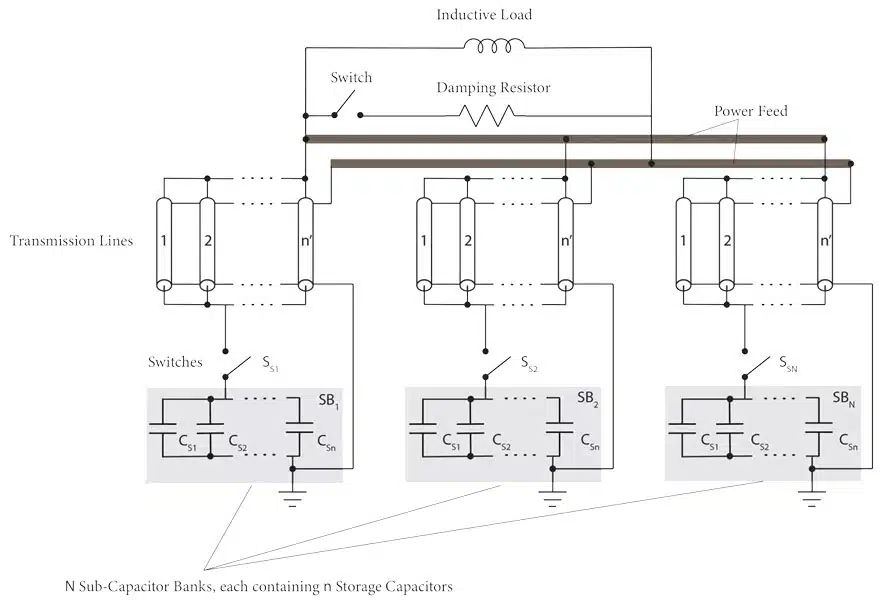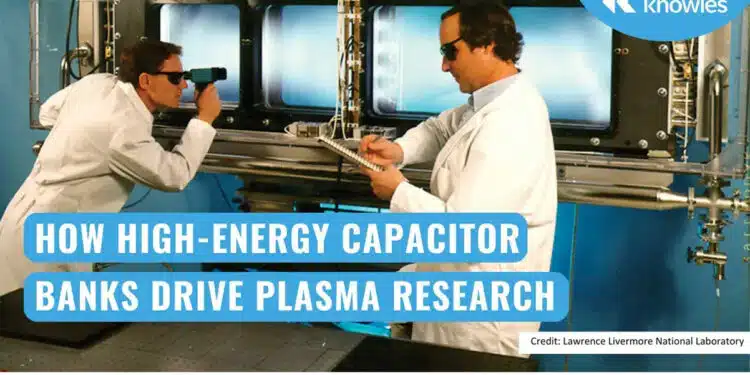This article based on Knowles Precision Devices blog discusses the role of capacitors in research of fusion energy sources.
From the National Ignition Facility (NIF) in California to the High Magnetic Field Facility in Dresden, high-energy capacitor banks are at the heart of high-power pulsed energy experiments worldwide. These systems provide a massive amount of fast-discharge energy for experiments that push the boundaries of science and technology.
Plasma generation, heating and confinement all require extremely high current pulses, and capacitor banks excel at delivering them. Their ability to discharge stored energy in a rapid, controlled manner makes them ideal for plasma experiments.
The Role of Capacitor Banks in Plasma Research
Capacitor banks enable key processes in plasma research, including:
- Plasma Generation: Creating plasma requires ionizing gas with a large electrical discharge. Capacitor banks provide the necessary energy for the initial breakdown and ionization process.
- Plasma Heating: Once a plasma is formed, it must be heated to extreme temperatures (i.e., millions of degrees). Ohmic heating, where current is passed through plasma, and inductive heating techniques rely on pulsed power from capacitor banks.
- Plasma Confinement: In magnetic confinement fusion experiments (e.g., tokamaks and stellarators), strong magnetic fields are used to contain hot plasma. Capacitor banks power the magnets that generate those fields in pulsed or short-duration scenarios.
- High-Temperature, High-Density Plasma Studies: Studying an extreme state of matter like plasma requires large amounts of energy delivered over short periods of time, making capacitor banks essential in experimental setups.
Assembling Capacitor Banks for Experiments
A high-energy capacitor bank, shown in Figure 1, consists of multiple sub-banks, each composed of several energy storage film capacitors. These banks are designed to deliver precise, high-current pulses. Energy storage capacitors are charged to a specified voltage by a charging supply. Then, a trigger pulse generator activates the sub-bank switches, firing them simultaneously for synchronized energy discharge. High currents from capacitor banks travel through transmission lines, ensuring efficient power delivery to the experiment.

One of the most advanced examples is NIF’s power conditioning system (PCS). The PCS consists of 192 modules, each containing eight capacitor banks, ensuring a highly controlled energy release. This system drives all 7,680 flashlamps used in the NIF’s laser amplification process, delivering nearly 330 million joules of electrical energy for each laser shot. In NIF’s case, 3,840 high-voltage capacitors store energy over 60 seconds and then release it in a 400-microsecond burst to power the laser amplifiers.
To explore a future powered by pulsed energy, read Capacitors in Fusion Energy Experiments. For more on capacitor technology in pulsed energy applications, read Specifying Capacitors for High-Energy Pulse Applications.































